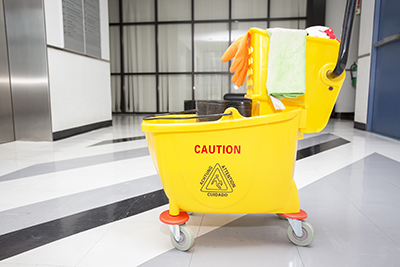Many companies are welcoming employees back into the office, but there’s much to do before anyone steps foot back into the workplace. As a leader or an HR manager, it’s important to have a comprehensive plan in place before welcoming your team back.
As you develop your company’s plan, communicate goals and initiatives with transparency to ensure everyone has a clear sense of what to expect, and then take action. Use these ideas as a starting place to ensure your office is ready for employees and everyone feels safe coming back.
1. Listen and Delegate
Before you make any big decisions, go right to the source: your employees. Don’t make a best guess on what they value or want from leadership right now; rather, ask them directly whether they want you to speak to them individually or send out polls and surveys. By leveraging their insight and feedback, you can develop a plan that specifically addresses their needs and the needs of the company as a whole.
Consider creating a COVID-19 response task force to help take on these responsibilities and prepare for future emergencies. In addition to using internal resources, don’t be afraid to delegate noncore activities to third-party resources to help HR and leadership teams reprioritize focus and time on keeping employees safe.
2. Develop Cleaning Routines and Procedures
Developing an ongoing sanitation schedule should be central to your plan for bringing people back into the office. In an April 2020 office cleaning survey of business owners and upper-level management, 83% of respondents noted an increased focus and investment in cleaning, with 34% using both professional and janitorial services to get the job done.
In addition, creating personal sanitation and cleaning resource stations in high-traffic areas or near desk spaces is a simple way to empower employees to manage their own environment. In relying on that autonomy, HR management can focus on officewide sanitation and general practices.
3. Adjust the Office Layout and Traffic Flow
In an effort to maintain proper social distancing practices, many offices are looking to restructure their layout to allow for 6 feet of space between employees’ desks. While the “open office” concept may be conducive to increasing collaboration between departments, it often leaves individuals within close distances of one another, so addressing this first and foremost is critical. McKinsey suggests how businesses can plan this:
“Organizations could create workspaces specifically designed to support the kinds of interactions that cannot happen remotely. If the primary purpose of an organization’s space is to accommodate specific moments of collaboration rather than individual work, for example, should 80 percent of the office be devoted to collaboration rooms? Should organizations ask all employees who work in cubicles, and rarely have to attend group meetings, to work from homes? If office space is needed only for those who cannot do so, are working spaces close to where employees live a better solution?”
This might require you to go back to the drawing board to redesign how the space functions. In doing so, however, you keep everyone safe and provide much-needed peace of mind.
4. Be Prepared to Provide Mental Health Support
It’s hard to put the challenges of COVID on the backburner, so employees may want to talk with you, as an HR manager, or their boss about managing the stress of this global pandemic and being back in the workplace. Prepare to have the hard conversations by showing you’re available for support.
According to communication expert Alice Calin, “The best thing you can do is to show that you are approachable and available if your colleague needs help. Make it clear that you are open to tackle such difficult conversations.”
Make this clear in pre-office communications, as well, so employees feel supported and encouraged to share and open up. This is also a good time for you to educate yourself on the mental health policies for the company health insurance so you can guide employees to the appropriate resources as necessary.
5. Provide Education and Resources
Communication is everything right now. In a time of uncertainty or fear, it’s your job to help educate and inform employees of general best practices in the office, including your commitments to keeping them safe and what changes they can anticipate.
Distribute new policies and procedures before employees get back into the office, whether in the form of print or video, to walk the team through the plan. While not all facets of your strategy may be relevant to employees, it’s important to include as much information as possible.
In Kroger’s Blueprint for Business, the value of making communication malleable and adaptable to accommodate changes over time is stressed. With the unpredictability of COVID-19 still high, you need to be prepared to shift your communication and approach to best fit each new situation.
Welcome Employees Back, But First …
Don’t welcome employees into the office until leadership, HR, and employees are clear on all the details. Use this time to prepare the office, plan work shifts, implement new cleaning procedures, and develop documents to communicate any and all changes. With that taken care of, everyone can start to create a “new normal” while feeling safe and supported.
Jessica Thiefels is an entrepreneur and founder and CEO of Jessica Thiefels Consulting. She’s been writing for more than 10 years and has been featured in top publications, including Forbes. She also writes for Score, Glassdoor, and more. Follow her on Twitter, @JThiefels, and connect on LinkedIn.
The post 5 Things to Do Before Welcoming Employees Back into the Office appeared first on HR Daily Advisor.
